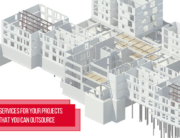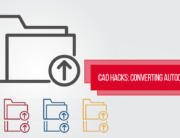CAD, which stands for Computer Aided Design, has been around for half a century now. By the evolution of computing power through the development of microprocessors and semiconductors, CAD was pushed into the limelight as a system that brought it from its humble beginnings as simple attempts to automate drafting, to the industry leading standard in which entire industries are reliant upon up to this day.
CAD meets the demands of every architect, engineer, draftsman, artist, or basically anyone that is involved in design and construction. It could be individual freelancers, big conglomerates, to anyone in the field, CAD software has always been used as a swiss-knife, a tool that’s used for basically every stage of the puzzle that is construction.
The Benefits of CAD
CAD’s roots go back to certain programming techniques that made drafting on a computer possible. But as technology evolved, so did the functions of the software itself. Today, modern CAD applications not only specialize in the different facets of technical drawings, but they’ve also been developed with engineering and organizational systems in mind. Systems like the industry standard BIM, or Building Information Modeling, have become an integral part of modern design and engineering solutions for construction. This type of software is used by everyone – be it agencies or firms, individuals or groups – as a system that networks every aspect of construction. From design plans, construction papers, operations, infrastructures that include utilities such as water, electricity, gas, communication pipelines, etc. This system highly expedites building management, which in turn can maximize profits through hitting deadlines on time.
From its roots in technical drawing, CAD effectively speeds up the general processes in which designs are made. Simply put, through CAD, computer models can be rotated in any direction, drawings can be zoomed in and out of, erased and re-done, orthographic projections are automatically generated – this list can go on, these benefits will always outweigh anything that can be done by hand. While it is still technically possible to design a building through manual drawings alone, the pace in which the modern industry demands from construction firms simply won’t allow it anymore.
CAD’s Influence in Manufacturing
It is important to note that CAD’s influence doesn’t only affect the construction industry, but also the manufacturing and design industries as well. With modern society’s increasing demand for high-technology products e.g. smartphones, CAD’s role in manufacturing has never been as significant as it is now. Within the context of design and manufacturing, CAD exponentially expedites the design processes through systems that are continually lessening the gap between the design process and mass production. From the recent jumps in 3D Printing to CAM (Computer Aided Manufacturing) and CNC (Computer Numerical Control), CAD paved the way for all of these technologies which are mostly responsible for the fast-paced world that we live in right now.
It is imperative for the basic user to realize the importance of CAD and how it ultimately influences the design and planning stage of every project that involves it. And with this influence comes importance, which effectively makes CAD the bedrock of modern day engineering.
***
For more information on our services, you can check our Services page. Or you can contact us at the numbers and email address below:
Telephone: +63 (02) 9574378(Manila),
Mobile: +63 (917) 8857507 (Manila),
+1 (516) 847-1694 (USA & Canada)
Email: contactus@cadaxis.com

























Recent Comments